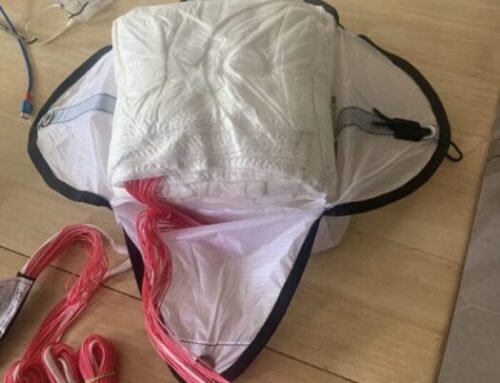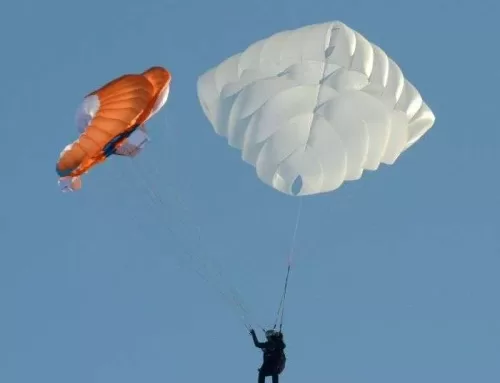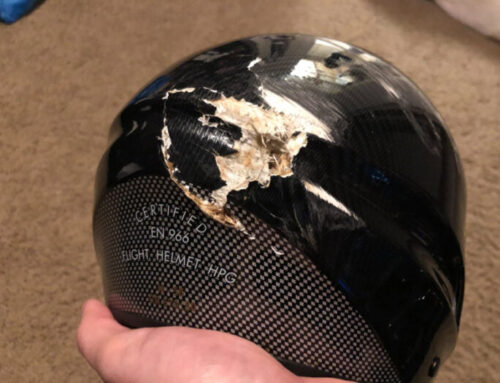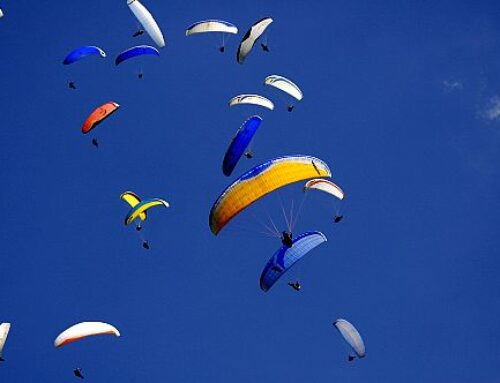Paragliding Helmets, fact or fiction?
Do paragliding pilots really need to wear Paragliding Helmets specifically built for flying?
Biking helmets for paragliding?
Not all helmets are built with the same standards. Helmets built for cycling / skateboarding usually have thin shells and large vents, which means less foam and impact absorption protection for you. Due to their large vents, they offer little warmth when flying at colder altitudes near cloud base. Cycling helmets often have visors and other extrusions that could easily get caught or tangled with paraglider lines. The large vents and thin shells of cycling helmets offer lower levels of impact protection against pointed objects. Certified cycling helmets usually are EN-1078 certified.
I’ve been unable to find any endorsement or recommendation for paragliding pilots to use a cycling / biking or skateboard helmet.
Ski Helmets
Skiing or snowboarding helmets are built to EN 1077, ASTM 2040 & Snell RS98 certifications. The EN-1077 class B blunt and penetrating impact tests are less stringent than EN-966. Some snow sports helmets are tested and certified to both EN 1077 & ASTM 2040.
The FAI has been allowing use of these helmets for paragliding in Category 1 Competiton events. BHPA, states “The helmet should be CE marked EN966, EN 1077 Class A, ASTM 2040, or SNELL RS98.”
Paragliding helmets
Paragliding helmets differ from other sports helmets, such as ski, climbing, or biking helmets, in several key aspects. They may give you more protection for the kinds of impacts that can occur when paragliding.
Design and Construction
Paragliding helmets are specifically designed and constructed to meet the unique needs of paragliding pilots. They are engineered to provide protection against impacts from various angles, including the front, sides, and back of the head. All certified paragliding helmets must be EN-966 certified.
Head injuries are caused by the sudden stop when our head hits a hard surface. The way to prevent the injury is to bring the head (and the brain) to a more gradual stop. A helmet reduces the peak force applied to the head in a sharp impact. When you are wearing a helmet during a fall or crash, the force of impact is distributed over the surface of the helmet, rather than concentrated on the head.
A paragliding helmet is designed to decelerate an impact and protect the brain through a combination of its construction and materials.
Impact Absorption
Paragliding helmets feature impact-absorbing foam liners that are designed to cushion and distribute the force of an impact. This foam is typically made of expanded polystyrene (EPS) or similar materials. The foam liner is crucial in reducing the risk of head injuries by absorbing and dissipating the energy from a collision.
EN 966 impact tests consider if the surface we hit is not flat. Rounded surfaces concentrate the force of the blow in a smaller area. The smaller the radius, the greater the concentration. To compensate, paragliding helmets have a harder outer shell to spread the force over a wider area and reduce the concentration.
The Shell
The outer shell of a paragliding helmet is typically made of strong and durable materials like thermoplastic, composite fiber, or Kevlar combined with carbon fiber. This shell serves as the first line of defense against impacts. When a collision occurs, the shell spreads the force of the impact over a larger area, reducing the intensity of the impact on any specific point.
Chin Strap System
Paragliding helmets have a secure chin strap system that ensures a snug and comfortable fit. This system is designed to keep the helmet securely in place during flight, even in turbulent conditions. The chin strap is usually adjustable and may include quick-release buckles for easy removal in case of an emergency.
Recently, I found a helmet on the ground near launch, the pilots name was written on the helmet. When I contacted him to return the lost helmet, he told me the helmet was buckled but fell off while airborne when he hit turbulence. The helmet was not a certified paragliding helmet and had fallen off with the chin strap buckled.
Ventilation
Paragliding helmets are designed with ventilation systems that allow for adequate airflow and heat dissipation, without compromising the foam protection. This is particularly important during long flights or in warm weather conditions.
Visor or Face Shield
Many paragliding helmets are available with a built-in visor or face shield. This feature provides additional protection for the face & eyes against potential impacts from debris, insects, or branches. The visor or face shield can be easily flipped up or down.
Weight and Aerodynamics
Paragliding helmets are designed to be lightweight to minimize strain on the pilot’s neck and head. The lightweight construction helps reduce fatigue during long flights. Some helmets are available in more aerodynamic shapes than a standard round shaped helmet.
An elongated more stream-lined helmet shape may not be helpful in case of an impact. Some pilots are concerned it could cause extension injuries to the neck.
Safety Certifications
Paragliding helmets, specifically those certified under EN-966, undergo rigorous testing to ensure they meet the safety standards specific to paragliding. These certifications guarantee that the helmet has been tested for impact resistance, penetration resistance, and stability. Ski, climbing, or biking helmets do not typically undergo the same testing and may not provide the same level of protection.
Open Face helmets or full-face helmets?
Open face helmets are built to give a certain level of protection on impact but provide less protection for your face. Full face helmets can provide facial protection but are heavier and bulkier to pack, reduce peripheral vision and some say reduce the ability to feel and hear the wind while flying.
EN 966 testing does not include chin bar testing but requires they must not block our vision.
There is debate amongst the paragliding community, regarding the pros and cons of full-face helmets. Some are concerned that the chin guard can act as a lever which, on certain impacts could cause additional rotation of the head causing damage to the neck that might not otherwise occurred. Others fully endorse and only wear a full-face helmet when paragliding. The choice is yours.
What about MIPS?
MIPS, or the Multi-Directional Impact Protection System, features a thin slip liner that covers the inside of the helmet. This technology aims to reduce the rotational acceleration of the head by allowing sliding between the helmet and the head during impact.
MIPS helmets in cycling and snow sports are becoming mainstream, and experts are saying that its good technology. At this time, I’m not aware of any EN 966 air sports helmets that contain the MIPS. Until we find an EN 966 MIPS helmet, perhaps EN 1077 Mips equipped snow helmets may be a good alternative to explore.
In Summary
Paragliding helmets are purpose-built to provide optimal protection and comfort for paragliding pilots. They are designed to withstand impacts from various angles, have impact-absorbing foam liners, secure chin strap systems, ventilation, and often include a visor or face shield.
These helmets meet specific safety standards and are lighter and more aerodynamic compared to helmets designed for other sports. Why take a chance on a helmet not designed for paragliding?
Here in our town, Bozeman, MT. A ski, climbing and mountain biking town, many athletes own a helmet for each sport they pursue.
Please, always wear a helmet that fits properly, is in good condition and been built and tested to protect you when paragliding.
When do I need to replace a helmet?
Immediately replace a helmet after you crash and hit your head. Impact crushes the foam liner reducing its protection, and the damage may not be visible. Helmets soften impact, so you may not even know your head hit unless you examine the helmet for marks or dents.
If you can see marks on the shell or notice any crushed foam at all, replace the helmet. Most manufacturers recommend helmet replacement after five years.
What to look for when buying a helmet
- Look for the EN966 certification sticker.
- Put it on, adjust the straps and then try pull it off. Be sure it does not slide from side-to-side or front-to-back.
- Is it square on top of your head, covering the top of your forehead.
- Is the chin strap buckle easy to fasten & unfasten. Does it keep the helmet from rocking in any direction?
- Make sure the helmet is comfortable and fits securely.
- Can you wear your sunglasses with the helmet on?
Here’s a helmet we like.
Here’s a list of En 966 helmet manufacturers.





[…] More about helmets […]